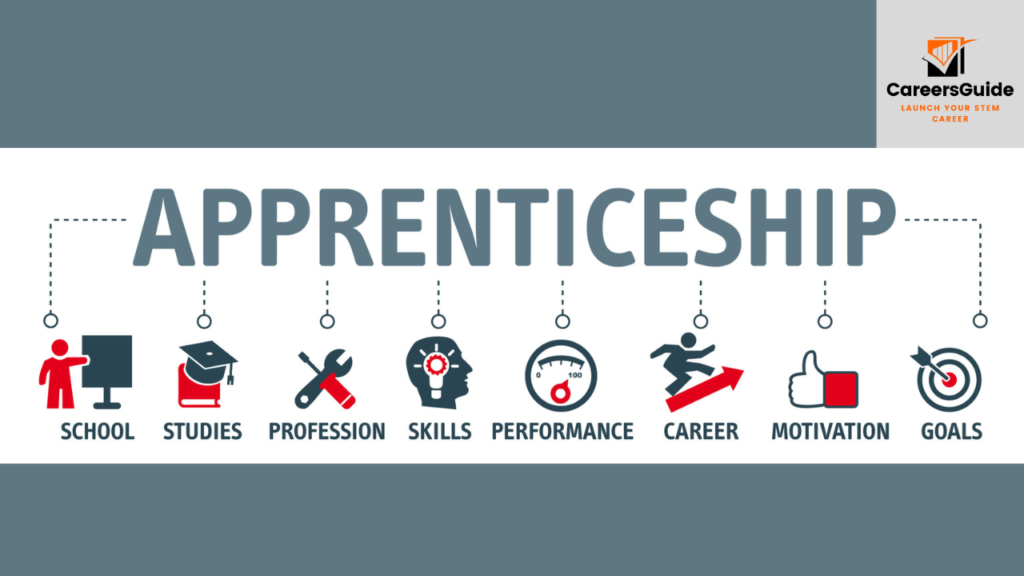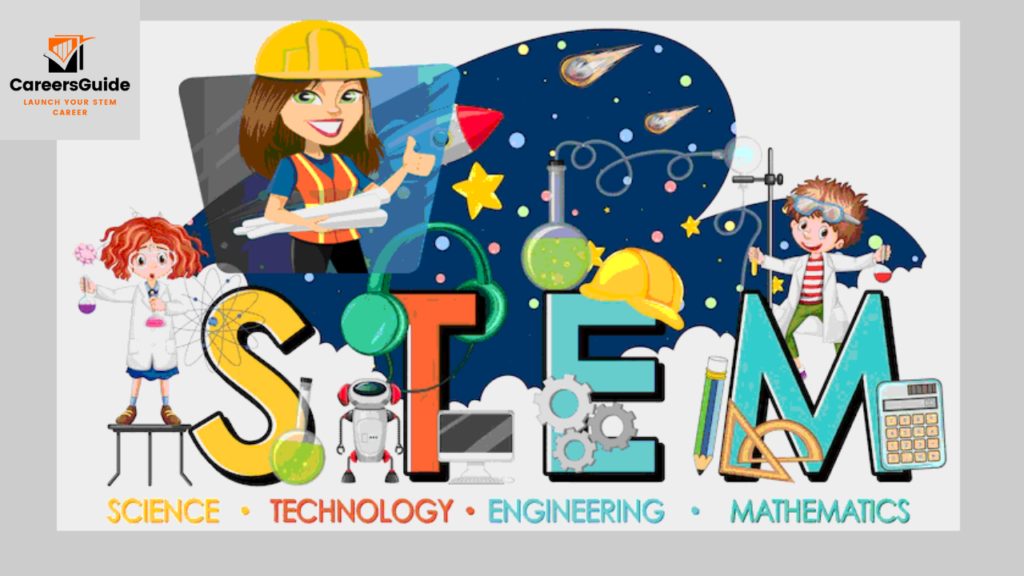STEM education is the fields of science, technology, engineering, and mathematics. It’s an interdisciplinary method of education that combines these four fields of study into a single, meaningful framework. The importance of STEM education cannot be overstated in today’s increasingly technology-driven world. It equips students with the critical thinking, problem-solving, and analytical skills necessary to thrive in a wide range of fields, from medicine to robotics to environmental science.
STEM education goes beyond rote memorization and encourages students to engage in hands-on, experiential learning experiences. It fosters creativity, innovation, and collaboration, preparing students to tackle real-world challenges and contribute meaningfully to society. By introducing students to the principles of scientific inquiry, computational thinking, and engineering design, STEM education cultivates a lifelong love of learning and empowers individuals to become lifelong learners and informed citizens.
In the following sections, we’ll delve deeper into the various educational paths available in STEM, explore the pros and cons of each path, and provide guidance on navigating the complex landscape of STEM education. Whether you’re a student contemplating your future career path, a parent seeking educational opportunities for your child, or an educator looking to enhance your STEM curriculum, this article aims to provide valuable insights and resources to help you navigate the exciting world of STEM education.

Importance of STEM education
The importance of STEM education cannot be overemphasized in today’s rapidly evolving world. Here are several key reasons why STEM education is crucial:
Promotes Innovation and Problem-Solving: STEM education fosters creativity and encourages students to think critically and analytically. By engaging in hands-on learning experiences and tackling real-world problems, students develop the skills necessary to innovate and find solutions to complex challenges.
Drives Economic Growth: STEM fields are the driving forces behind economic growth and innovation. By equipping students with STEM skills, education prepares them for high-demand, well-paying jobs in industries such as technology, healthcare, engineering, and manufacturing, thus contributing to economic prosperity.
Addresses Global Challenges: Many of the world’s most pressing challenges, such as climate change, public health crises, and cybersecurity threats, require STEM solutions. STEM education prepares students to understand and address these challenges by providing them with the knowledge and skills needed to make informed decisions and develop sustainable solutions.
Fosters Digital Literacy: In today’s digital age, digital literacy is essential for success in both personal and professional life. STEM education teaches students how to use technology effectively, critically evaluate information, and navigate the digital landscape safely and ethically.
Promotes Equity and Inclusivity: STEM education has the potential to bridge the gap between different socioeconomic and demographic groups by providing equal access to high-quality educational opportunities. By promoting diversity and inclusivity in STEM fields, education helps ensure that everyone has the opportunity to participate in and benefit from the advancements of the future.
Prepares Students for Future Careers: The jobs of the future will increasingly require STEM skills. By introducing students to STEM concepts and practices early on, education prepares them for a wide range of career opportunities in emerging fields such as artificial intelligence, data science, biotechnology, and renewable energy.
Overall, STEM education plays a crucial role in preparing students for success in the 21st century. By fostering innovation, driving economic growth, addressing global challenges, promoting digital literacy, fostering equity and inclusivity, and preparing students for future careers, STEM education empowers individuals to thrive in an increasingly complex and interconnected world.
Various fields encompassed in STEM
STEM encompasses a wide range of fields, each contributing to different aspects of science, technology, engineering, and mathematics. Here are some of the various fields encompassed in STEM:

- Science: Science encompasses disciplines such as biology, chemistry, physics, earth sciences, and astronomy. It involves the study of the natural world, including living organisms, matter, energy, and the universe. Scientists conduct experiments, make observations, and formulate theories to better understand the fundamental principles governing the universe.
- Technology: Technology refers to the application of scientific knowledge to create tools, systems, and solutions that improve human lives and enhance productivity. This includes fields such as computer science, information technology, software engineering, telecommunications, and robotics. Technologists develop software, hardware, and systems to solve problems, automate tasks, and facilitate communication and collaboration.
- Engineering: Engineering involves the application of scientific and mathematical principles to design, build, and maintain structures, machines, systems, and processes. It encompasses various disciplines, including civil engineering, mechanical engineering, electrical engineering, chemical engineering, aerospace engineering, and biomedical engineering. Engineers solve practical problems, optimize processes, and innovate new technologies to meet societal needs.
- Mathematics: Mathematics is the study of patterns, structures, and relationships using abstract symbols and logical reasoning.It covers subjects like mathematical modeling, algebra, geometry, calculus, statistics, and statistics.Mathematicians develop mathematical theories, algorithms, and techniques to solve problems in diverse areas, including finance, cryptography, and data analysis.
- STEM Education: STEM education focuses on teaching and learning in science, technology, engineering, and mathematics. It encompasses various educational approaches, methodologies, and pedagogies aimed at developing students’ STEM skills, competencies, and literacy. STEM educators design engaging learning experiences, integrate hands-on activities, and promote inquiry-based learning to inspire curiosity and foster a deeper understanding of STEM concepts.
These fields are interconnected and interdisciplinary, often overlapping and collaborating to address complex challenges and drive innovation forward. By integrating knowledge and skills from multiple disciplines, STEM professionals can tackle real-world problems more effectively and contribute to advancements in science, technology, engineering, and mathematics. Explore the hottest STEM career opportunities waiting for you
Understanding Different Educational Paths in STEM
Understanding the different educational paths in STEM is essential for individuals aspiring to pursue careers in science, technology, engineering, and mathematics. Here, we’ll explore the various routes available, each with its own set of advantages and considerations.
Overview of Educational Options
Traditional Academic Route:
- Pursuing a bachelor’s degree in a specific STEM field.
- Typically involves attending lectures, conducting laboratory experiments, and completing coursework.
- Provides a comprehensive understanding of the chosen discipline and prepares students for further education or entry-level positions in the workforce
Vocational Training Programs:
-
- Offer hands-on training in technical skills relevant to specific STEM careers.
- Focus on practical, job-focused education rather than theoretical knowledge.
- Ideal for individuals interested in gaining specialized skills quickly and entering the workforce sooner.
Apprenticeships and Internships:
- Provide valuable real-world experience through on-the-job training.
- Allow students to work alongside experienced professionals and gain practical skills and industry insights.
- Offer opportunities for networking, mentorship, and potential employment upon completion.
Online Learning Platforms and Certifications:
- Offer flexible and accessible options for acquiring STEM knowledge and skills.
- Provide self-paced courses, tutorials, and certifications in various STEM disciplines.
- Enable individuals to learn from anywhere with an internet connection and accommodate diverse learning styles and schedules.
Pros and Cons of Each Path
Traditional Academic Route:
- Pros: Provides a comprehensive education, opportunities for research and specialization, and a recognized degree.
- Cons: It requires finance and significant time , and may not be suitable for everyone’s learning ability or career goals.
Vocational Training Programs:
- Pros: Offers hands-on training and practical skills relevant to specific careers, shorter duration compared to traditional degrees.
- Cons: Limited in scope and may not provide the same depth of theoretical knowledge, may not be transferable to other fields.
Apprenticeships and Internships:
-
- Pros: Provides real-world experience, opportunities for networking and mentorship, and the potential for employment after completion.
- Cons: Typically unpaid or low-paying, a competitive selection process, may require relocation.
Online Learning Platforms and Certifications:
- Pros: Flexible and accessible, self-paced learning, variety of courses and certifications available.
- Cons: Lack of hands-on experience, may not be recognized by all employers, requires self-discipline and motivation.
Considerations for Choosing a Path

Personal Interests and Career Goals:
-
- Consider your interests, strengths, and long-term career aspirations when choosing an educational path.
Financial Considerations:
-
- Evaluate the cost of education, including tuition, fees, and potential lost income during study or training.
Job Market Demand:
-
- Research the job market demand for different STEM careers and the qualifications required for entry-level positions.
Learning Preferences:
-
- Determine your preferred learning style and environment, whether it’s traditional classroom-based learning, hands-on training, or self-directed online learning.
By understanding the various educational paths available in STEM and weighing the pros and cons of each option, individuals can make informed decisions that align with their interests, goals, and circumstances. Whether pursuing a traditional degree, vocational training, apprenticeship, or online certification, there are opportunities to acquire the knowledge and skills needed to succeed in the dynamic and ever-evolving field of STEM.
Traditional Academic Route
The traditional academic route in STEM involves pursuing a bachelor’s degree in a specific field of science, technology, engineering, or mathematics (STEM). This path is well-established and widely recognized as the standard route for individuals seeking in-depth knowledge and expertise in their chosen discipline.
Pursuing a Bachelor’s Degree
Attending Lectures and Labs:
- Students enrolled in the traditional academic route attend lectures delivered by professors who are experts in their respective fields. These lectures cover foundational theories, principles, and concepts.
- Additionally, students participate in laboratory sessions where they apply theoretical knowledge to practical experiments and projects.
Completing Coursework:
- Throughout their degree program, students complete a series of coursework tailored to their chosen STEM discipline.
- Coursework typically includes subjects such as mathematics, physics, biology, computer science, engineering principles, and specialized courses relevant to the specific field of study.
Specializations within STEM Fields:
- Within each STEM discipline, students have the opportunity to specialize in a particular area of interest.
- For example, in engineering, students may choose to specialize in civil engineering, mechanical engineering, electrical engineering, or aerospace engineering, among others.
Pros and Cons of the Traditional Academic Route
Pros:
- Comprehensive Education: The traditional academic route provides a comprehensive understanding of the chosen STEM discipline, covering both theoretical concepts and practical applications.
- Research Opportunities: Bachelor’s degree programs often offer opportunities for students to engage in research projects under the guidance of faculty members, allowing them to contribute to the advancement of knowledge in their field.
- Recognized Credential: A bachelor’s degree is widely recognized by employers and serves as a valuable credential for entry-level positions in STEM-related industries.
Cons:
- Time and Financial Investment: Pursuing a bachelor’s degree requires a significant time commitment, typically spanning four years of full-time study. Additionally, tuition fees and other expenses can be substantial.
- Competitive Admissions: Admission to reputable STEM programs can be highly competitive, especially for prestigious institutions or specialized fields of study.
- Limited Flexibility: Traditional academic programs may have rigid curriculum structures, limiting flexibility for students who wish to explore interdisciplinary interests or pursue non-traditional learning pathways.
Alternative Paths to STEM Careers
Alternative paths to STEM careers offer individuals opportunities to gain practical skills and hands-on experience outside of the traditional academic route. These paths provide viable alternatives for those who may prefer a more direct route to the workforce or seek non-traditional learning experiences. Here are several alternative paths to consider:
Vocational Training Programs
1. Hands-On Training:
-
- Vocational training programs offer hands-on training in specific technical skills relevant to STEM careers.
- Students learn practical skills through workshops, simulations, and real-world projects, preparing them for immediate entry into the workforce.
2. Focused Curriculum:
-
- The curriculum of vocational programs is tailored to the demands of specific industries, such as manufacturing, construction, information technology, or healthcare.
- Students gain specialized knowledge and skills that are directly applicable to their chosen field of interest.
3. Shorter Duration:
-
- Compared to traditional academic programs, vocational training programs are often shorter in duration, allowing students to enter the workforce more quickly and with less debt.
Apprenticeships and Internships

- On-the-Job Training:
- Apprenticeships and internships provide opportunities for students to gain real-world experience by working alongside experienced professionals in STEM-related industries.
- Participants learn valuable skills and industry-specific knowledge while receiving mentorship and guidance from seasoned professionals.
2. Networking Opportunities:
- Apprenticeships and internships offer networking opportunities that can lead to job offers or connections within the industry.
- Participants build relationships with employers and colleagues, increasing their chances of securing employment upon completion of the program.
3. Earn While You Learn:
- Many apprenticeships and internships offer compensation for participants, allowing them to earn income while gaining valuable work experience.
Online Learning Platforms and Certifications
Flexible Learning Options:
-
- Online learning platforms offer flexible and accessible options for acquiring STEM knowledge and skills.
- Participants can access course materials, lectures, and assignments from anywhere with an internet connection, allowing for self-paced learning and personalized study schedules.
1. Wide Range of Courses:
-
- Online learning platforms offer a wide range of courses and certifications in various STEM disciplines, from computer programming to data analysis to cybersecurity.
- Participants can choose courses that align with their interests and career goals, gaining targeted skills relevant to their desired field.
2. Cost-Effective:
-
- Online courses and certifications are often more affordable than traditional academic programs, making them accessible to a broader range of learners.
- Participants can acquire valuable skills and credentials without the high cost of tuition associated with traditional education.
Navigating the Decision-Making Process
Navigating the decision-making process when it comes to pursuing a career in STEM requires careful consideration of various factors to ensure that individuals make informed choices aligned with their interests, skills, and aspirations. Here’s a guide to assist you in successfully managing this process:
Assessing Personal Interests and Skills
1. Self-Reflection:
-
- Take time to reflect on your interests, passions, and strengths. Consider what aspects of STEM subjects excite you the most and where your talents lie.
2. Skills Assessment:
-
- Evaluate your skills and abilities in STEM-related areas, such as problem-solving, analytical thinking, and technical proficiency.Identify your strengths and potential areas for improvement.
Clarifying Career Goals and Aspirations
1. Research Career Options:
-
- Explore the wide range of career opportunities available within STEM fields. Research different job roles, industries, and sectors to gain insight into potential career paths.
2. Set Clear Goals:
-
- Define your short-term and long-term career goals in STEM. Determine what you hope to achieve professionally and the steps required to reach your objectives.
Considering Educational Pathways
1. Explore Educational Options:
-
- Research the various educational pathways available in STEM, including traditional academic routes, vocational training programs, apprenticeships, internships, and online learning platforms.
2. Evaluate Pros and Cons:
-
- Consider the advantages and disadvantages of each educational pathway. Assess factors such as time commitment, financial investment, hands-on experience, and career outcomes.
Seeking Guidance and Advice

Consult with Mentors:
Seek guidance from mentors, teachers, professors, or professionals working in STEM fields. You may overcome possible obstacles and make wise judgments with their guidance and insights.
Utilize Career Resources:
Take advantage of career resources, guidance counselors, and informational websites dedicated to STEM education and careers. These resources provide valuable information and support throughout the decision-making process.
Making Informed Decisions
1. Weighing Options:
-
- Compare and contrast the different educational pathways and career options available to you. Consider how each aligns with your interests, goals, and values.
2. Choosing a Path:
-
- Ultimately, choose the educational pathway that best aligns with your interests, goals, and circumstances. Follow your gut and decide on what seems appropriate for you.
Remaining Flexible and Open-Minded
1. Embracing Opportunities:
-
- Stay open to new opportunities and experiences that may arise along your STEM journey. Be willing to adapt and pivot as needed to pursue new interests or explore different career paths.
2. Continued Learning:
-
- Recognize that learning is a lifelong process. Stay curious, continue to expand your knowledge and skills, and be open to pursuing further education or professional development opportunities as your career evolves.
Resources for Exploring STEM Education
Exploring STEM education resources is essential for individuals interested in pursuing careers in science, technology, engineering, and mathematics. Here are some valuable resources to help you explore STEM education options:
Guidance Counselors and Career Advisors
1. School Counselors:
-
- School guidance counselors can provide personalized guidance and support in exploring STEM education options. They can offer insights into educational pathways, career opportunities, and resources available within your school or community.
2. Career Advisors:
-
- Career advisors specialize in providing guidance on career planning and exploration. They can assist you in identifying your interests, skills, and goals related to STEM fields and help you navigate the educational and career decision-making process.
Online Research and Informational Websites
1. STEM Learning Websites:
-
- Explore online platforms dedicated to STEM education, such as Khan Academy, Coursera, edX, and Codecademy. These websites offer a wide range of free and paid courses, tutorials, and resources in various STEM disciplines.
2. STEM Career Portals:
-
- Visit STEM career portals and websites, such as STEMJobs, Science Buddies, and MyFuture, to learn about different STEM career paths, job opportunities, and educational requirements. These platforms often feature articles, interviews, and resources to help you explore STEM careers.
Networking with Professionals in STEM Fields
1. Professional Organizations:
-
- Join professional organizations and associations related to your areas of interest in STEM. These organizations often host networking events, workshops, and conferences where you can connect with professionals, researchers, and educators in your field.
2. LinkedIn and Online Forums:
-
- Utilize social networking platforms like LinkedIn to connect with professionals working in STEM fields. Join STEM-related groups and online forums to participate in discussions, ask questions, and seek advice from experienced professionals.
Educational Events and Workshops
1. STEM Workshops and Camps:
-
- Attend STEM workshops, camps, and events hosted by educational institutions, museums, and community organizations. These hands-on experiences provide opportunities to explore STEM concepts, engage in interactive activities, and connect with peers who share similar interests.
2. STEM Competitions:
-
- Participate in STEM competitions and challenges, such as science fairs, robotics competitions, and coding hackathons. These events foster creativity, problem-solving skills, and teamwork while showcasing your talents to potential mentors and educators.
Overcoming Challenges in STEM Education
Overcoming challenges in STEM education is essential to ensure equitable access and opportunities for all individuals interested in pursuing careers in science, technology, engineering, and mathematics. The following are some major issues and solutions for them:
Addressing Gender and Diversity Disparities
1. Promoting Inclusivity:
-
- Implement initiatives to promote gender and diversity inclusivity in STEM education and workplaces. Encourage underrepresented groups to pursue STEM careers through mentorship programs, scholarships, and outreach efforts.
2. Challenging Stereotypes:
-
- Challenge stereotypes and biases that discourage certain groups from pursuing STEM fields. Provide positive role models and showcase diverse perspectives in STEM to inspire and empower individuals from all backgrounds.
3. Creating Supportive Environments:
-
- Foster supportive learning environments that value diversity, equity, and inclusion. Provide resources and support networks for students from underrepresented groups to thrive in STEM education and careers.
Addressing Financial Barriers
1. Increasing Access to Financial Aid:
-
- Advocate for increased access to scholarships, grants, and financial aid for students pursuing STEM education. Partner with organizations and institutions to offer financial support to students from low-income backgrounds.
2. Reducing Educational Costs:
-
- Explore ways to reduce the financial burden of STEM education, such as offering low-cost or free educational materials, textbooks, and online resources. Promote affordable alternatives to traditional educational pathways, such as vocational training programs and online courses.
3. Providing Work-Study Opportunities:
-
- Offer work-study programs and paid internships to help students offset the costs of education while gaining valuable work experience in STEM fields.
Balancing Academics and Extracurricular Activities
Balancing academics and extracurricular activities is crucial for students pursuing STEM education. While academics provide the foundation of knowledge and skills necessary for success in STEM fields, extracurricular activities offer valuable opportunities for hands-on learning, skill development, and personal growth.The following are some methods for striking a sound balance:
Pursuing Higher Education and Career Advancement
Pursuing higher education and career advancement in STEM fields is a strategic pathway for individuals seeking to deepen their expertise, expand their opportunities, and make meaningful contributions to their respective fields. Here are some key steps to consider for pursuing higher education and advancing your career in STEM:
Setting Clear Goals and Objectives
1. Define Your Career Aspirations:
-
- Take time to reflect on your career goals and aspirations within the STEM field. Consider the specific areas of interest or specialization you wish to pursue and the level of education required to achieve your objectives.
2. Research Higher Education Options:
-
- Explore different higher education institutions, degree programs, and research opportunities available in your chosen STEM field. Consider factors such as program reputation, faculty expertise, research facilities, and financial support options.
Identifying the Right Educational Pathway
1. Choose the Right Degree Program:
-
- Select a degree program that aligns with your career goals and interests, whether it’s a master’s degree, doctoral program, or professional certification. Consider factors such as curriculum focus, research opportunities, and career outcomes.
2. Consider Online and Part-Time Options:
-
- Explore flexible educational options, such as online degree programs or part-time study, that allow you to balance your academic pursuits with work or other commitments. These options provide flexibility while still allowing you to pursue higher education.
Building a Strong Academic Foundation
1. Excel in Your Studies:
-
- Keep up good grades and do well in your classes, projects, and tests. Demonstrate your passion for learning and commitment to excellence in your chosen STEM field.
2. Seek Research Opportunities:
-
- Take advantage of research opportunities, internships, or co-op programs to gain hands-on experience and develop practical skills relevant to your field of study. Engage with faculty mentors and collaborators to enhance your research capabilities.
Networking and Professional Development
1. Build Professional Relationships:
-
- Network with professionals, researchers, and peers in your field through conferences, workshops, and professional associations. Establishing connections and building relationships can open doors to career opportunities and collaborations.
2. Invest in Continuous Learning:
-
- Stay abreast of emerging trends, technologies, and advancements in your field through continuous learning and professional development activities. Attend seminars, webinars, and training programs to expand your knowledge and skills.
Leveraging Career Resources and Opportunities
1. Utilize Career Services:
-
- Take advantage of the career services offered by your educational institution or professional organizations. Seek guidance on resume writing, job search strategies, interview preparation, and networking opportunities.
2. Explore Career Pathways:
-
- Research the different career pathways and job opportunities available in your STEM field. Consider factors such as industry demand, salary potential, work-life balance, and opportunities for advancement when making career decisions.
The Future of STEM Education
The future of STEM education holds promise and potential for transformative advancements that will shape the way we teach, learn, and innovate in science, technology, engineering, and mathematics. Here are some key trends and developments shaping the future of STEM education:
Embracing Digital Transformation
1. Online and Blended Learning:
-
- The proliferation of online learning platforms and technology-enabled classrooms will continue to expand access to STEM education, offering flexible learning opportunities and personalized learning experiences.
2. Virtual and Augmented Reality:
-
- Virtual and augmented reality technologies will revolutionize STEM education by creating immersive learning environments, virtual laboratories, and interactive simulations that enhance student engagement and comprehension of complex concepts.
Cultivating Future-Ready Skills
1. Focus on 21st Century Skills:
-
- STEM education will increasingly emphasize the development of essential 21st-century skills such as critical thinking, problem-solving, collaboration, communication, and digital literacy, preparing students for success in a rapidly evolving global economy.
2. Emphasis on Lifelong Learning:
-
- Lifelong learning will be essential in STEM fields, with a growing recognition of the need for continuous upskilling and reskilling to adapt to technological advancements and changes in the workforce landscape.
Conclusion
STEM education stands at the forefront of shaping the future of learning and innovation across science, technology, engineering, and mathematics. As we navigate the dynamic landscape of STEM education, it is evident that advancements in technology, interdisciplinary collaboration, equity and inclusion, hands-on learning experiences, and future-ready skill development will play pivotal roles in shaping the educational experiences and opportunities available to learners.
FAQs
1. What is STEM education?
-
- The term “STEM education” is an interdisciplinary method of teaching that combines mathematics, science, technology, and engineering. It emphasizes hands-on, inquiry-based learning experiences to foster critical thinking, problem-solving, and innovation skills.
2. Why is STEM education important?
-
- STEM education is important because it prepares students with the skills and knowledge needed to succeed in an increasingly technology-driven and interconnected world. It cultivates critical thinking, creativity, and problem-solving abilities essential for addressing complex global challenges and driving innovation.
3. How can I get involved in STEM education initiatives?
-
- There are many ways to get involved in STEM education initiatives, such as volunteering at schools, mentoring students, participating in STEM outreach programs, supporting educational organizations, and advocating for equitable access to STEM opportunities.
4. What are some career options in STEM fields?
-
- Career options in STEM fields are diverse and encompass a wide range of professions, including software development, biomedical engineering, data analysis, environmental science, robotics, cybersecurity, and much more. STEM careers offer opportunities for innovation, growth, and making a positive impact on society.
5. How can I encourage my child’s interest in STEM?
-
- You can encourage your child’s interest in STEM by exposing them to hands-on STEM activities, encouraging curiosity and exploration, providing access to STEM resources and educational materials, fostering a growth mindset, and highlighting the relevance of STEM in everyday life and future career opportunities.



